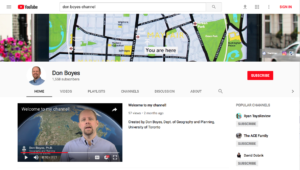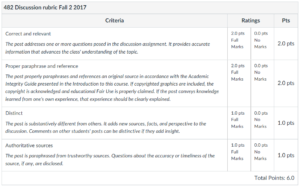Newsletter – May 2018
PRESIDENT’S COLUMN
The Difference That an Award Can Make (For All of Us)
By Derek Alderman
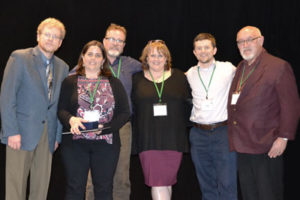
One of the greatest pleasures of serving as President of the AAG is attending and participating in the Association’s awards ceremonies, both at Regional Division conferences and at the Honors Luncheon held every year at our national meetings. Words cannot adequately describe the feelings of pride and fulfillment that award recipients appear to experience upon having their scholarship, teaching, or outreach/service recognized publicly… I encourage members to take full advantage of the award nomination process to recognize deserving colleagues. Members might also consider nominating a person previously overlooked or unsung at awards ceremonies but who has given significantly to geography. I suggest that awards make a difference to us, both in terms of the welfare of individual nominee and the wider discipline.
Read past columns from the current AAG President on our President’s Column page.
ANNUAL MEETING
2018 AAG Annual Meeting Highlights
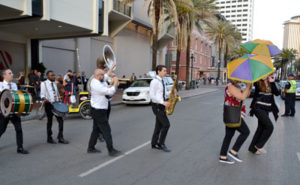
The American Association of Geographers annual meeting was held April 10–14, 2018 in New Orleans, Louisiana. This conference hosted 8,550 geographers, GIS specialists, environmental scientists, and other registrants from around the world, with 32% of registrants coming from countries outside of the United States. Whether you want to reminisce or just see what you missed, check out our retrospective of the special events and sessions from New Orleans.
MAD wins 2018 World Geography Bowl
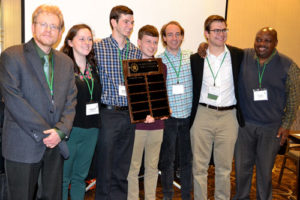 The Mid Atlantic Team won first place in the 2018 World Geography Bowl, an annual geography knowledge competition for teams of college-level geography students representing the AAG’s regional divisions. The MAD Team defeated Team SEDAAG during the final round of the event where AAG President Derek Alderman served as a guest judge. In its 29th year of hosting, the 2018 AAG World Geography Bowl provides a fun nighttime conference activity while also assisting students in attending the AAG Annual Meeting.
The Mid Atlantic Team won first place in the 2018 World Geography Bowl, an annual geography knowledge competition for teams of college-level geography students representing the AAG’s regional divisions. The MAD Team defeated Team SEDAAG during the final round of the event where AAG President Derek Alderman served as a guest judge. In its 29th year of hosting, the 2018 AAG World Geography Bowl provides a fun nighttime conference activity while also assisting students in attending the AAG Annual Meeting.
View photos and news about the 2018 Bowl.
ASSOCIATION NEWS
2018 AAG Nystrom Award Recipients Announced
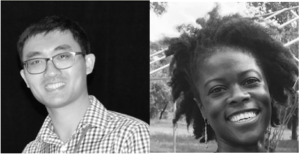 A fund established by former AAG President J. Warren Nystrom supports an annual prize for a paper based upon a recent dissertation in geography. There were 4 finalists in this year’s competition. They presented their papers in a special session on Wednesday, April 11, 2018 where the Nystrom Committee selected two Nystrom Awardees. The Nystrom Committee and the AAG are pleased to announce Bisola Falola of the University of Texas Austin and Qunshan Zhao of Arizona State University as the recipients of the 2018 J. Warren Nystrom Award. Bisola Falola’s dissertation is entitled “Terrains of Trauma – Urban Youth and Policies of Disinvestment.” Qunshan Zhao’s dissertation is entitled “Impact of tree locations and arrangements on outdoor microclimates and human thermal comfort in an urban residential environment.”
A fund established by former AAG President J. Warren Nystrom supports an annual prize for a paper based upon a recent dissertation in geography. There were 4 finalists in this year’s competition. They presented their papers in a special session on Wednesday, April 11, 2018 where the Nystrom Committee selected two Nystrom Awardees. The Nystrom Committee and the AAG are pleased to announce Bisola Falola of the University of Texas Austin and Qunshan Zhao of Arizona State University as the recipients of the 2018 J. Warren Nystrom Award. Bisola Falola’s dissertation is entitled “Terrains of Trauma – Urban Youth and Policies of Disinvestment.” Qunshan Zhao’s dissertation is entitled “Impact of tree locations and arrangements on outdoor microclimates and human thermal comfort in an urban residential environment.”
Learn more about the Nystrom Award and previous awardees.
Meet the Editors of AAG Journals: Stephen Hanna
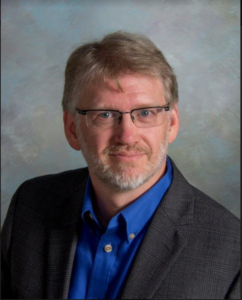 Over the next several months, the AAG will be adding a new section to our newsletter and social media accounts to help members get to know the many editors of the AAG suite of journals. This month, meet one of the AAG Journals’ newest editors, Dr. Stephen Hanna. Hanna serves as the Cartography Editor for three of the AAG journals: the Annals of the Association of American Geographers, the Professional Geographer, and GeoHumanities.
Over the next several months, the AAG will be adding a new section to our newsletter and social media accounts to help members get to know the many editors of the AAG suite of journals. This month, meet one of the AAG Journals’ newest editors, Dr. Stephen Hanna. Hanna serves as the Cartography Editor for three of the AAG journals: the Annals of the Association of American Geographers, the Professional Geographer, and GeoHumanities.
Find out more about the AAG Journals editors.
MEMBER NEWS
Profiles of Professional Geographers
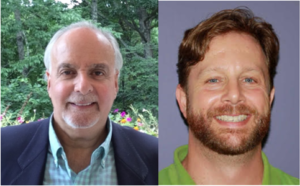 Geography education often emphasizes a multidisciplinary approach as a way to understand the breadth of knowledge the discipline has to offer. The two professional geographers interviewed this month in the AAG Profiles of Professional Geographers, Joe Scarpaci, Executive Director of Center for Study of Cuban Culture & Economy and Matthew Connolly, Assistant Professor of Geography, University of Central Arkansas, both agree that this big picture approach to understanding the world is a key asset for those looking to undertake a career path in geography. Combine this diverse knowledge base with time management skills to make a winning combination!
Geography education often emphasizes a multidisciplinary approach as a way to understand the breadth of knowledge the discipline has to offer. The two professional geographers interviewed this month in the AAG Profiles of Professional Geographers, Joe Scarpaci, Executive Director of Center for Study of Cuban Culture & Economy and Matthew Connolly, Assistant Professor of Geography, University of Central Arkansas, both agree that this big picture approach to understanding the world is a key asset for those looking to undertake a career path in geography. Combine this diverse knowledge base with time management skills to make a winning combination!
Learn more about Geography careers.
The Department of Geography, Environment and Spatial Sciences at Michigan State University Makes History
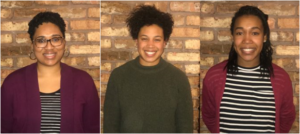
The MSU Department of Geography, Environment and Spatial Sciences has admitted and will fund three African American women graduate students for the 2018 academic year. This will be the first time in the history of the Department that three African American graduate students will be admitted and funded in the same year. The students admitted and funded are Cordelia Martin-Ikpe who will be pursuing a PhD in Geography with a focus on public health, Raven Mitchell who will begin her master’s in geography with an emphasis on physical and environmental geography, and Kyeesha Wilcox who will start her master’s degree in geography by researching urban social geography and food deserts.
Read more about the students and the department.
RESOURCES & OPPORTUNITIES
2018 Guide to Geography Programs Deadline Extended
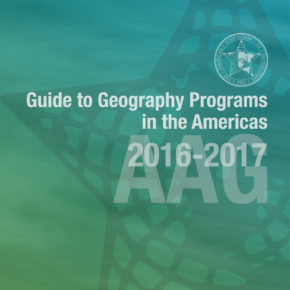 The American Association of Geographers is accepting entries from geography programs for the 2018 edition of the Guide to Geography Programs in the Americas. The deadline for submitting a listing has been extended to Friday, June 1, 2018. The 2018 edition of the Guide will be available exclusively online. The Guide lists undergraduate and graduate programs in all areas of geography and includes an interactive map that students can use to explore and discover geography programs, with easy-to-use search tools to find programs by degree type, region, and program specialization. It has long been an invaluable reference for faculty, prospective students, government agencies, and private firms in the United States, Canada, and throughout the world.
The American Association of Geographers is accepting entries from geography programs for the 2018 edition of the Guide to Geography Programs in the Americas. The deadline for submitting a listing has been extended to Friday, June 1, 2018. The 2018 edition of the Guide will be available exclusively online. The Guide lists undergraduate and graduate programs in all areas of geography and includes an interactive map that students can use to explore and discover geography programs, with easy-to-use search tools to find programs by degree type, region, and program specialization. It has long been an invaluable reference for faculty, prospective students, government agencies, and private firms in the United States, Canada, and throughout the world.
More information on the Guide and how to list your program.
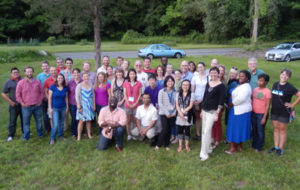
Early Career Faculty and Department Leadership Workshops
On behalf of the Geography Faculty Development Alliance, the AAG is pleased to announce the 2018 Early Career and Department Leadership Workshops! These annual workshops for early career faculty and late career graduate students or geography department leaders will be held at the George Washington University in D.C. from June 10-16, 2018 (early career) and June 13-16, 2018 (department leaders).
More information and registration available.
AGI Webinar – Adapting Wildfire Management to 21st Century Conditions
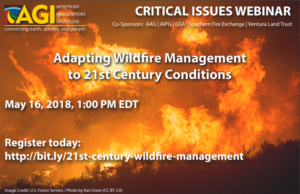 The American Geosciences Institute’s Policy & Critical Issues program, in partnership with the American Association of Geographers, is hosting a free webinar, Adapting Wildfire Management to 21st Century Conditions, that will take place May 16th from 1:00-2:00 PM EDT. This webinar will explore recent trends in wildfires and changes in contributing factors/drivers of these hazards; examine different wildfire policy and management strategies and how they apply to different ecosystems; and feature case studies of wildfire policy and management strategies in the western and southern states. Speakers will be Tania Schoennagel from the University of Colorado-Boulder, David Godwin from the Southern Fire Exchange, and Vaughan Miller from the Ventura County Fire Department.
The American Geosciences Institute’s Policy & Critical Issues program, in partnership with the American Association of Geographers, is hosting a free webinar, Adapting Wildfire Management to 21st Century Conditions, that will take place May 16th from 1:00-2:00 PM EDT. This webinar will explore recent trends in wildfires and changes in contributing factors/drivers of these hazards; examine different wildfire policy and management strategies and how they apply to different ecosystems; and feature case studies of wildfire policy and management strategies in the western and southern states. Speakers will be Tania Schoennagel from the University of Colorado-Boulder, David Godwin from the Southern Fire Exchange, and Vaughan Miller from the Ventura County Fire Department.
More information and register for the free webinar.
Call for Nominations for AAG Honors
 Please consider nominating outstanding colleagues for the AAG Honors, the highest awards offered by the American Association of Geographers! AAG Honors are offered annually to recognize outstanding accomplishments by AAG members in research and scholarship, teaching, education, service, and for lifetime achievement. Individual AAG members, specialty groups, affinity groups, departments, and other interested parties are encouraged to nominate outstanding colleagues by June 30.
Please consider nominating outstanding colleagues for the AAG Honors, the highest awards offered by the American Association of Geographers! AAG Honors are offered annually to recognize outstanding accomplishments by AAG members in research and scholarship, teaching, education, service, and for lifetime achievement. Individual AAG members, specialty groups, affinity groups, departments, and other interested parties are encouraged to nominate outstanding colleagues by June 30.
Guidelines for Honors nominations and a full listing of previous AAG Honorees.
AAG Fellows Program – Call for Nominations
 The AAG is soliciting nominations for the AAG Fellows Program by Saturday, June 30, 2018. Please consider nominating outstanding colleagues to be recognized as AAG Fellows, a program to recognize geographers who have made significant contributions to advancing geography! Nominations for AAG Fellows are reviewed annually by the AAG Honors Committee, who will submit a slate of final nominations to the AAG Council for selection.
The AAG is soliciting nominations for the AAG Fellows Program by Saturday, June 30, 2018. Please consider nominating outstanding colleagues to be recognized as AAG Fellows, a program to recognize geographers who have made significant contributions to advancing geography! Nominations for AAG Fellows are reviewed annually by the AAG Honors Committee, who will submit a slate of final nominations to the AAG Council for selection.
Additional information and guidelines for Fellows nominations.
PUBLICATIONS
Read the May 2018 Issue of the ‘Annals of the AAG’ ’
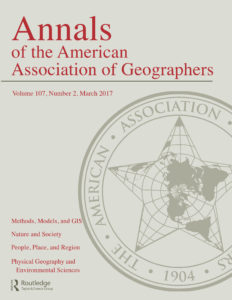
The AAG is pleased to announce that Volume 108, Issue 3 (May 2018) of the Annals of the American Association of Geographers is now available. While the Annals features original, timely, and innovative articles that advance knowledge in all facets of the discipline, each issue highlights one article chosen by the editors. This month’s editors’ choice is Governing Dispossession: Relational Land Grabbing in Laos by Miles Kenney-Lazar.
Full article listing available.
May 2018 Issue of the ‘Professional Geographer’ Now Available
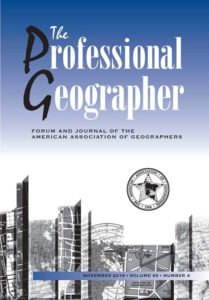
The Professional Geographer, Volume 70, Issue 2, has been published. Of note to geographers interested in the Public Engagement theme for #AAG2018, the focus section in this issue is Out in the World: Geography’s Complex Relationship with Civic Engagement. The issue also includes short articles in academic or applied geography, emphasizing empirical studies and methodologies.
New Books in Geography — March 2018 Available

Books published during the month of March 2018 have been compiled in the monthly list of newly-published books in geography and related fields. Books in the March list include the 2018 AAG Meridian Book Award winner, Rare Earth Frontiers: From Terrestrial Subsoils to Lunar Landscapes, as well as books whose topics encompass regional geographies, environmentalism, and big data.
Browse the whole list of new books.
Spring 2018 Issue of ‘The AAG Review of Books’ Now Available
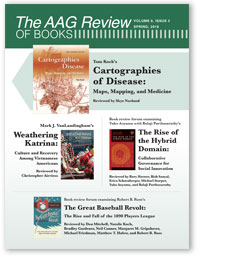
Volume 6, Issue 2 of the quarterly The AAG Review of Books has now been published online. In addition to scholarly reviews of recent books related to geography, public policy and international affairs, this issue features longer book review fora of Refugees in Extended Exile: Living on the Edge, The Rise of the Hybrid Domain: Collaborative Governance for Social Innovation, and The Great Baseball Revolt: The Rise and Fall of the 1890 Players League.
GEOGRAPHERS IN THE NEWS
- Jennifer Collins, University of South Florida and AAG National Councilor, received promotion to Full Professor
- Brent McCusker lends expertise to World Bank report on climate change induced migration
- Geographers named as Fellows of the Academy of Social Sciences
IN THE NEWS
Popular stories from the AAG SmartBrief
- Large crack appears in Africa
- What does a warming Arctic mean for the future
- Miss. River flooding has intensified, study says
- Updated map shows greater risk from Tsunami in Wash.
- 2018 hurricane season may be above average
EVENTS CALENDAR
- May 16, 2018 – AGI Free Webinar – Adapting Wildfire Management to 21st Century Conditions
- May 20-22, 2018 – 35TH CONFERENCE OF LATIN AMERICANIST GEOGRAPHERS
- June 10-16, 2018 – Geography Faculty Development Alliance Workshop for Early Career Faculty
- June 13-16, 2018 – Department Leadership Workshop
Submit News to the AAG Newsletter. To share your news, email us
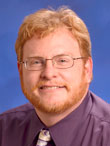
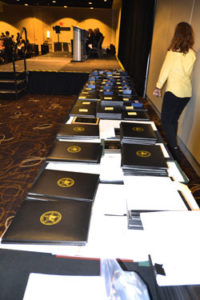
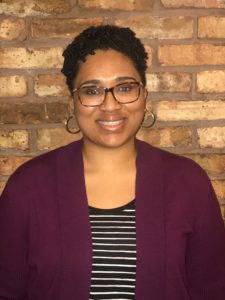

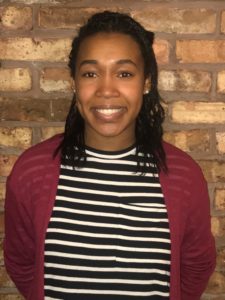
 The American Geosciences Institute’s Critical Issues Program is pleased to offer a free webinar in partnership with the American Association of Geographers, “
The American Geosciences Institute’s Critical Issues Program is pleased to offer a free webinar in partnership with the American Association of Geographers, “ We are just days away from the start of the AAG annual meeting. I look forward to seeing many of you in New Orleans. For most of us, participating in the conference is work. It may be a labor of love, but it represents, nonetheless, a significant investment in terms of money, energy, and time. Please know that your investment and work on behalf of the discipline and the Association at the meeting is appreciated…No doubt, conferences should be about the work of building disciplinary bonds and expertise; however, I would suggest our meetings potentially offer an even wider array of professional interactions and benefits that open us to new places, people, and skills. In this column, I discuss the value, but also the challenges, of making our AAG meetings more public-oriented.
We are just days away from the start of the AAG annual meeting. I look forward to seeing many of you in New Orleans. For most of us, participating in the conference is work. It may be a labor of love, but it represents, nonetheless, a significant investment in terms of money, energy, and time. Please know that your investment and work on behalf of the discipline and the Association at the meeting is appreciated…No doubt, conferences should be about the work of building disciplinary bonds and expertise; however, I would suggest our meetings potentially offer an even wider array of professional interactions and benefits that open us to new places, people, and skills. In this column, I discuss the value, but also the challenges, of making our AAG meetings more public-oriented.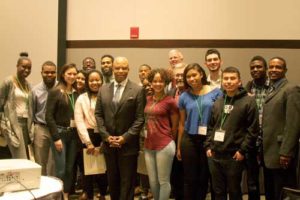
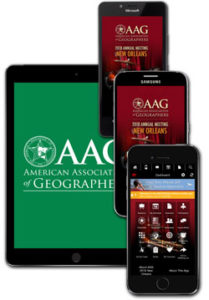 Make the most of your AAG annual meeting experience by downloading the AAG mobile app, the digital version of the AAG Annual Meeting Program. With the AAG mobile app, attendees can browse sessions and abstracts, create and save a personalized schedule of events, and find up to the minute information about room changes or upcoming activities. A detailed user manual is available for download on the AAG Annual Meeting website. Don’t wait until you’re standing in the registration line, download the AAG mobile app before you get to New Orleans!
Make the most of your AAG annual meeting experience by downloading the AAG mobile app, the digital version of the AAG Annual Meeting Program. With the AAG mobile app, attendees can browse sessions and abstracts, create and save a personalized schedule of events, and find up to the minute information about room changes or upcoming activities. A detailed user manual is available for download on the AAG Annual Meeting website. Don’t wait until you’re standing in the registration line, download the AAG mobile app before you get to New Orleans!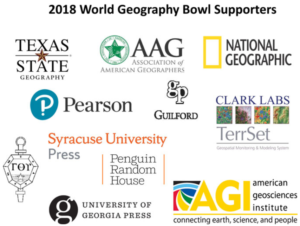 The annual round robin tournament features teams of students from each of the AAG Regional Divisions competing for both a team championship title and individually for an MVP Award. The 2018 World Geography Bowl will be held on Wednesday, April 11 starting at 7:30 PM in the Bayside A-C, Oak Alley, and Nottoway rooms on the 4th Floor of the Sheraton hotel, one floor down from the International Reception. Stop by on your way to the reception or join in to watch the championship round after the reception concludes! Prizes donated from generous sponsors are awarded to winning teams and individuals.
The annual round robin tournament features teams of students from each of the AAG Regional Divisions competing for both a team championship title and individually for an MVP Award. The 2018 World Geography Bowl will be held on Wednesday, April 11 starting at 7:30 PM in the Bayside A-C, Oak Alley, and Nottoway rooms on the 4th Floor of the Sheraton hotel, one floor down from the International Reception. Stop by on your way to the reception or join in to watch the championship round after the reception concludes! Prizes donated from generous sponsors are awarded to winning teams and individuals.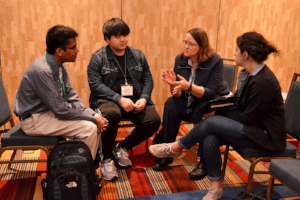 The Jobs and Careers Center will be open daily from 8:00 AM to 5:30 PM daily during #AAG2018. Stop by for over 65 sessions, workshops, and field trips related to careers and professional development. Sessions will cover a broad range of topics, from working as a geographer in the public, private, nonprofit, or academic sector, to networking strategies, to becoming a certified GIS Professional (GISP), to women in leadership roles in geography. Students, be sure to attend the Student Networking Happy Hour on Thursday, April 12 from 3:00 – 5:00 pm.
The Jobs and Careers Center will be open daily from 8:00 AM to 5:30 PM daily during #AAG2018. Stop by for over 65 sessions, workshops, and field trips related to careers and professional development. Sessions will cover a broad range of topics, from working as a geographer in the public, private, nonprofit, or academic sector, to networking strategies, to becoming a certified GIS Professional (GISP), to women in leadership roles in geography. Students, be sure to attend the Student Networking Happy Hour on Thursday, April 12 from 3:00 – 5:00 pm.
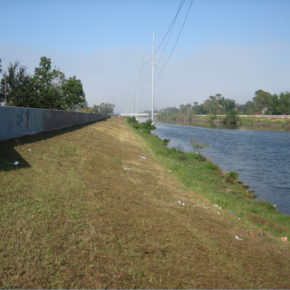 Flooding still represents the costliest natural disasters in the United States on an annual basis, explains
Flooding still represents the costliest natural disasters in the United States on an annual basis, explains 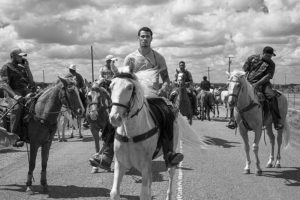 While many outsiders may be familiar with the larger Mardis Gras parades and festivals in Louisiana, fewer people know about the trail riding events of the state’s Creole riding clubs.
While many outsiders may be familiar with the larger Mardis Gras parades and festivals in Louisiana, fewer people know about the trail riding events of the state’s Creole riding clubs. 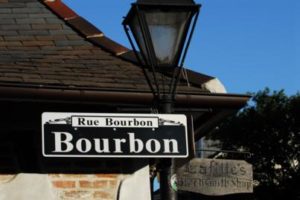 The Big Easy has always been cool, but the geography of cultural strongholds in the city has changed over time. Bourbon Street in the 1930s was a hotbed of nightlife with its 63 nightclub establishments, some of the first in the United States. But is Bourbon Street, with its critics’ claims of inauthenticity, still considered “cool” today?
The Big Easy has always been cool, but the geography of cultural strongholds in the city has changed over time. Bourbon Street in the 1930s was a hotbed of nightlife with its 63 nightclub establishments, some of the first in the United States. But is Bourbon Street, with its critics’ claims of inauthenticity, still considered “cool” today? 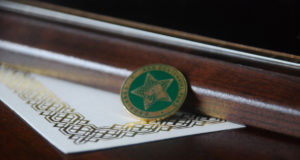 The AAG is pleased to announce the recipients of the three 2018 AAG Book Awards: the John Brinckerhoff Jackson Prize, the AAG Globe Book Award for Public Understanding of Geography, and the AAG Meridian Book Award for Outstanding Scholarly Work in Geography. The AAG Book Awards mark distinguished and outstanding works published by geography authors during the previous year, 2017. Formal recognition of the awardees will occur during the
The AAG is pleased to announce the recipients of the three 2018 AAG Book Awards: the John Brinckerhoff Jackson Prize, the AAG Globe Book Award for Public Understanding of Geography, and the AAG Meridian Book Award for Outstanding Scholarly Work in Geography. The AAG Book Awards mark distinguished and outstanding works published by geography authors during the previous year, 2017. Formal recognition of the awardees will occur during the 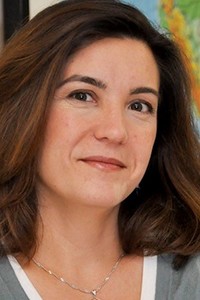 Wendy Jepson, professor of Geography at Texas A&M University, was named a AAAS Alan I. Leshner Leadership Institute Public Engagement Fellow for the class of 2018-2019. Jepson, who was recently elected an AAG National Councilor, is one of the 15 food and water security researchers chosen to represent this year’s class of fellows. The goals of the Leshner Leadership Institute are not only to address scientific issues surrounding resource availability, but also to better engage the public through science/society dialog.
Wendy Jepson, professor of Geography at Texas A&M University, was named a AAAS Alan I. Leshner Leadership Institute Public Engagement Fellow for the class of 2018-2019. Jepson, who was recently elected an AAG National Councilor, is one of the 15 food and water security researchers chosen to represent this year’s class of fellows. The goals of the Leshner Leadership Institute are not only to address scientific issues surrounding resource availability, but also to better engage the public through science/society dialog.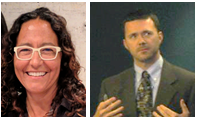 Geographers Cristi Delgado, GISP, Enterprise GIS & Open Data Coordinator for the City of Berkeley, California and Paul McDaniel, Assistant Professor of Geography at Kennesaw State University love the ways that a career in geography connects them with current events and their communities. In this month’s Profiles of Professional Geographers, read about their varied career paths and the diverse skills needed to pursue employment in the geographic field.
Geographers Cristi Delgado, GISP, Enterprise GIS & Open Data Coordinator for the City of Berkeley, California and Paul McDaniel, Assistant Professor of Geography at Kennesaw State University love the ways that a career in geography connects them with current events and their communities. In this month’s Profiles of Professional Geographers, read about their varied career paths and the diverse skills needed to pursue employment in the geographic field.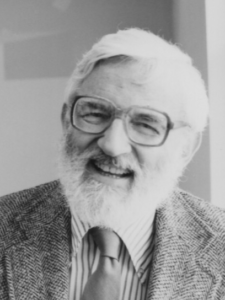 Alfred W. Crosby died peacefully at Nantucket Cottage Hospital among friends and family on March 14, 2018. He was 87 and had lived with Parkinson’s Disease for two decades. During his career, Crosby taught at Albion College, the Ohio State University, Washington State University, and the University of Texas at Austin, retiring in 1999 as Professor Emeritus of Geography, History, and American Studies. In addition to his many accolades, Crosby was also involved in the Civil Rights movement, taught Black Studies and the history of American jazz, helped to build a medical center for the United Farm Workers’ Union, and took a leadership role in anti-war demonstrations.
Alfred W. Crosby died peacefully at Nantucket Cottage Hospital among friends and family on March 14, 2018. He was 87 and had lived with Parkinson’s Disease for two decades. During his career, Crosby taught at Albion College, the Ohio State University, Washington State University, and the University of Texas at Austin, retiring in 1999 as Professor Emeritus of Geography, History, and American Studies. In addition to his many accolades, Crosby was also involved in the Civil Rights movement, taught Black Studies and the history of American jazz, helped to build a medical center for the United Farm Workers’ Union, and took a leadership role in anti-war demonstrations.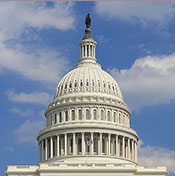
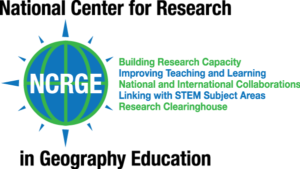 The National Center for Research in Geography Education (NCRGE) invites proposals to develop new collaborative and interdisciplinary research networks in geography education. Through this program, NCRGE aspires to strengthen geography education research processes and promote the growth of sustainable, and potentially transformative, lines of research. Along this vein, NCRGE is also hosting a
The National Center for Research in Geography Education (NCRGE) invites proposals to develop new collaborative and interdisciplinary research networks in geography education. Through this program, NCRGE aspires to strengthen geography education research processes and promote the growth of sustainable, and potentially transformative, lines of research. Along this vein, NCRGE is also hosting a 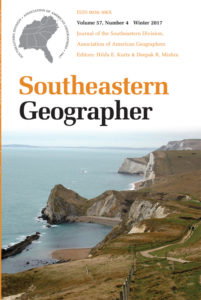 In recognition of the location of AAG’s 2018 Annual Meeting in New Orleans and Black Geographies as one of the three meeting themes, Southeastern Geographer offers free access to digital issues on
In recognition of the location of AAG’s 2018 Annual Meeting in New Orleans and Black Geographies as one of the three meeting themes, Southeastern Geographer offers free access to digital issues on  Volume 6, Issue 1 of The AAG Review of Books has now been published online. In this first issue of 2018 be sure to check out the discussions of Concrete Revolution: Large Dams, Cold War Geopolitics, and the US Bureau of Reclamation, Degraded Work: The Struggle at the Bottom of the Labor Market, and Cities in Global Capitalism.
Volume 6, Issue 1 of The AAG Review of Books has now been published online. In this first issue of 2018 be sure to check out the discussions of Concrete Revolution: Large Dams, Cold War Geopolitics, and the US Bureau of Reclamation, Degraded Work: The Struggle at the Bottom of the Labor Market, and Cities in Global Capitalism.